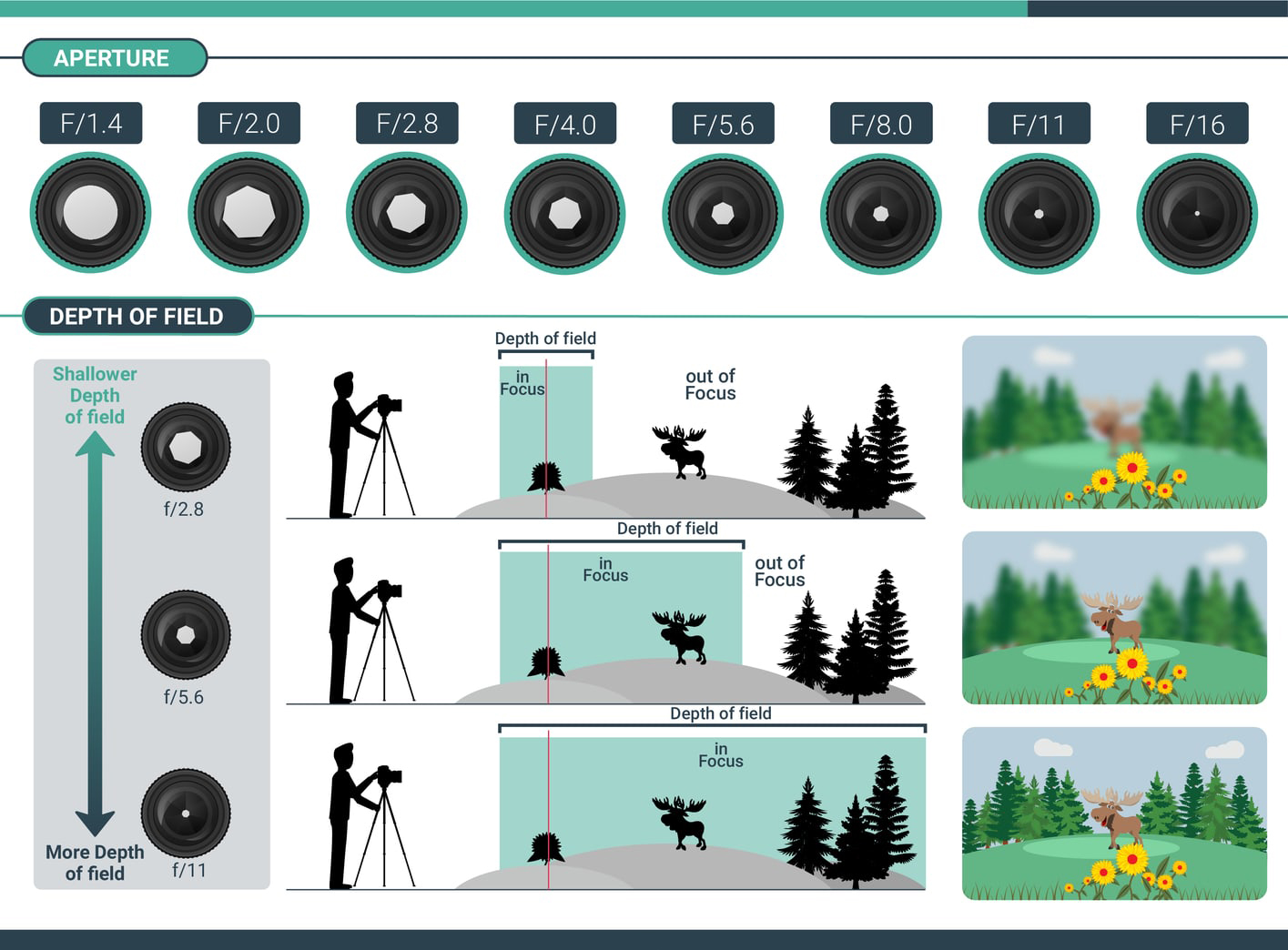

If you are using a basic camera with all automatic features, you won't be able to manually control the aperture settings.
Depth of field and f stop manual#
In order to control the aperture settings you will need a camera that has a semi-automatic mode such as aperture priority, or a full manual mode. That is why many photographers like to create shallow depth of field in their pictures when they are taking portrait shots. The F Stop was changed to F4.5 for image #4. Those two pictures are very basic examples of how the depth of field can be changed by simply by using a different F Stop.Ĭreating pictures with extremely shallow depth of field has the effect of highlighting the subject while blurring the background to minimize distractions in the picture. The only thing that was changed from one picture to the next was the F Stop. The depth of field in image #4 would be called fairly shallow. In image #4, the bottles are in focus but the background is out of focus. As you can see, the bottles in image #3 are in sharp focus and the background would be considered to be in acceptable focus by most people. The depth of field in image #3 is somewhat deep. Larger lens aperture openings like F4.5 or F2.8 can help to produce shallow depth of field in an image. Smaller aperture openings (F Stops) like F11 or F16 tend to produce deeper or wider depth of field in an image. The various sizes of the lens aperture opening are known as F Stops. It is an opening that can be made larger or smaller to allow more, or less of the light coming through the lens to reach the camera's image sensor. The Camera Lens Aperture: The aperture is part of the camera lens. The reasons can get a little technical but for now, just keep in mind that it is easier to create shallow depth of field with a Digital Slr camera than with a compact camera. The type of camera that is used and its camera lens/image sensor size combination will also affect the depth of field in an image. Those factors include the camera lens aperture opening, the camera lens to subject distance, as well as the focal length of the camera lens that is being used.Īll three of those things can individually affect the depth of field, but ultimately, the depth of field in a picture is determined by various combinations of all three. What affects the Depth of Field in an Image? There are several factors that can influence the depth of field in an image. However, if you were to enlarge those same images and view them very closely, you would probably see that the focus is not razor sharp in every part of the image.That is why you will find terms like "acceptable or apparent" sharpness in many definitions of depth of field. In many images or prints, the decrease in sharp focus from the exact focusing point to the areas in front of or behind it may be so slight or gradual that it cannot be detected by our eyes from a normal viewing distance. Image #2 is an example of shallow depth of field. The flags in the front part of the picture are in focus but the ones behind them are very much out of focus. RfB will use this value over the value set for Distance.Next take a look at image #2. Focus Object: You can also select an object from the scene to be your distance.Distance: The distance to the object or location you want in-focus (sharp) measured in scene grid units.0 to -1 makes it brighter in the center and falloff towards the edges.įor more information on the various aperture controls, see Bokeh. 0 to 1 makes it brighter at the outer edge like a catadrioptic lens (look it up, quite interesting). Density: This controls the brightness across the bokeh shape.Values from 0 to -1 bow inwards and make for sharper points.


Lower values increase blur while higher values decrease blur. F Stop: Like a real camera lens, this setting controls the strength of the effect.To begin using DOF in Blender, go to the camera data properties for the camera that you want to to render DOF from, and click the checkbox next to Depth of Field, as shown below. The render cost of depth of field can be high as it generates noise that needs many more samples to converge.


 0 kommentar(er)
0 kommentar(er)
